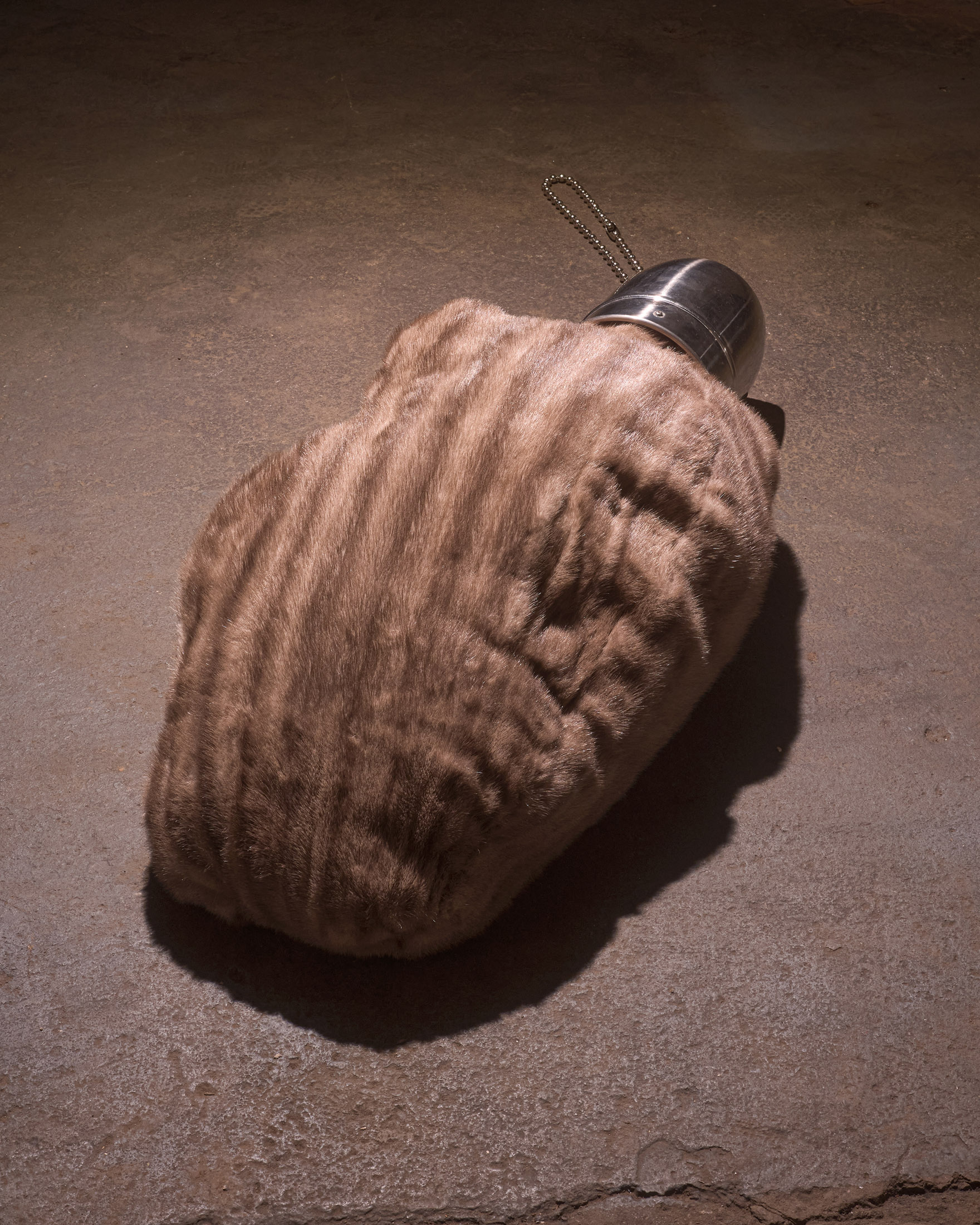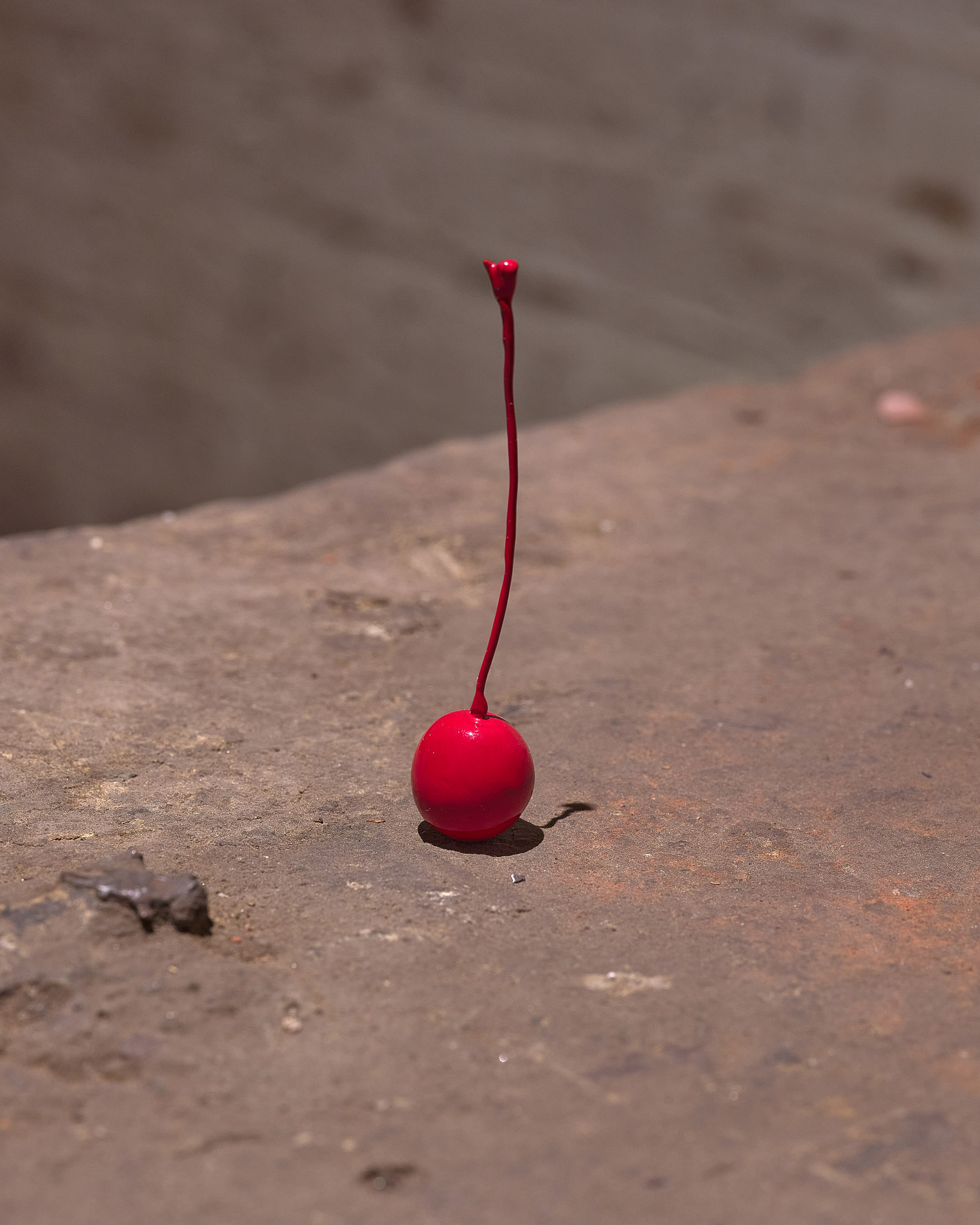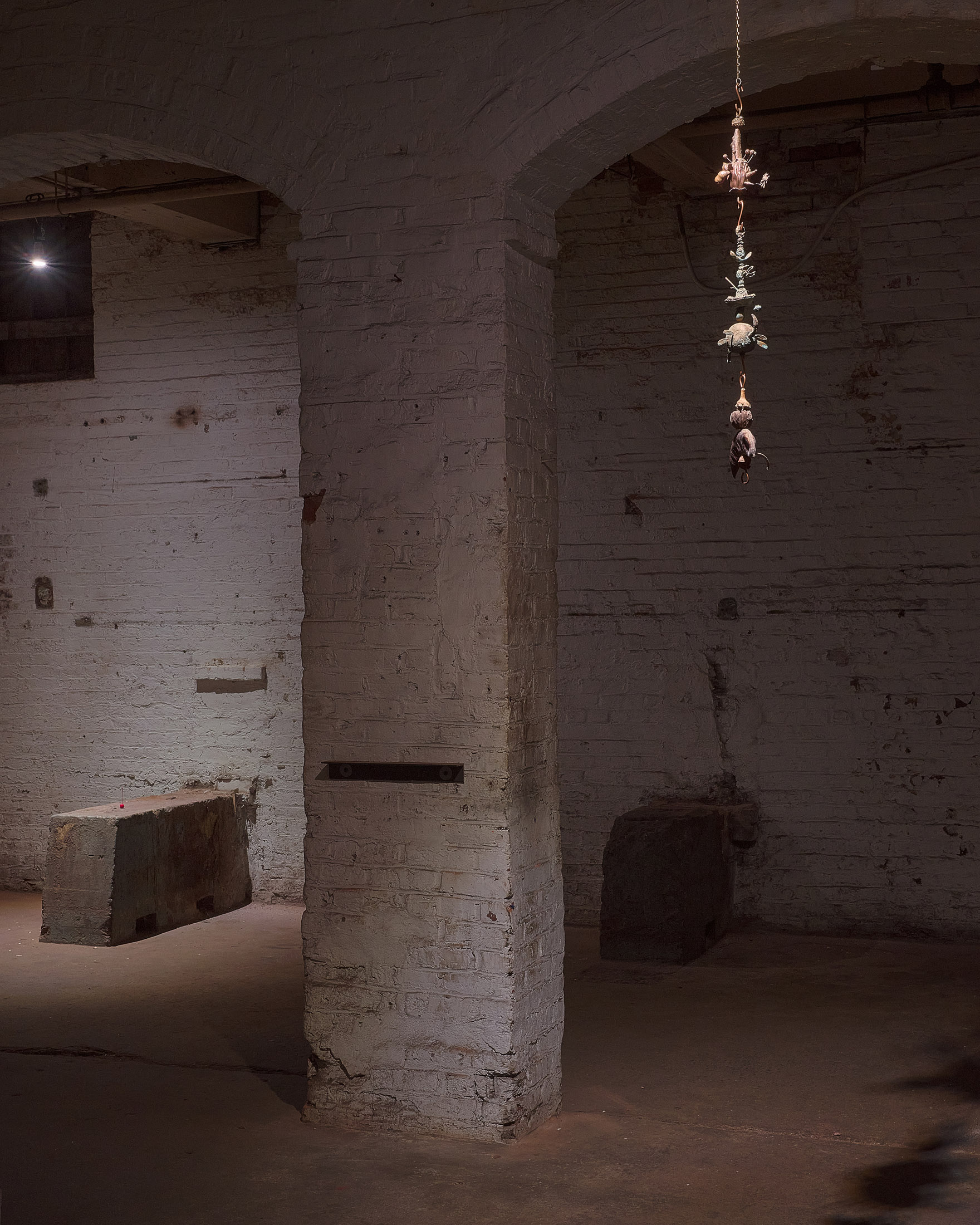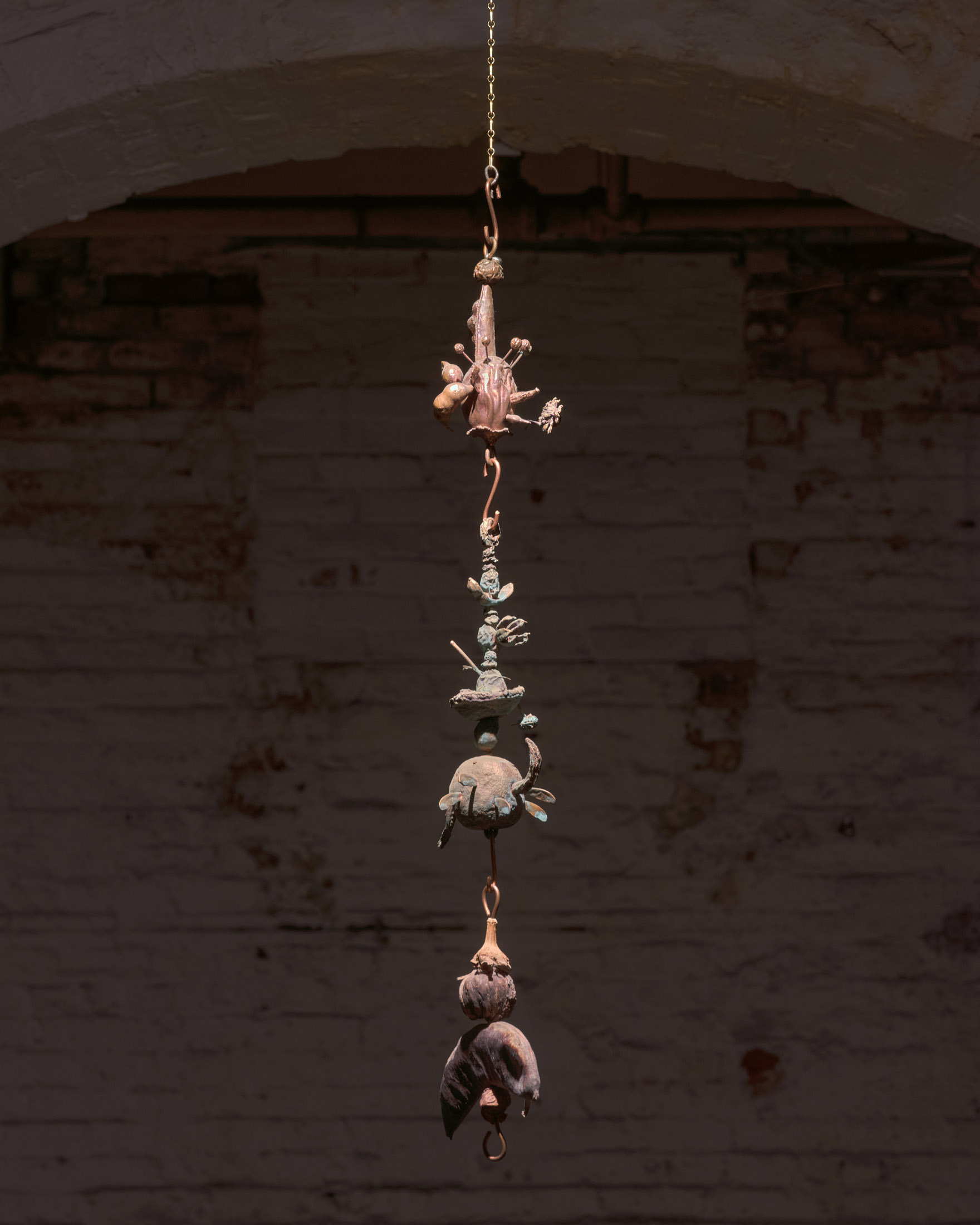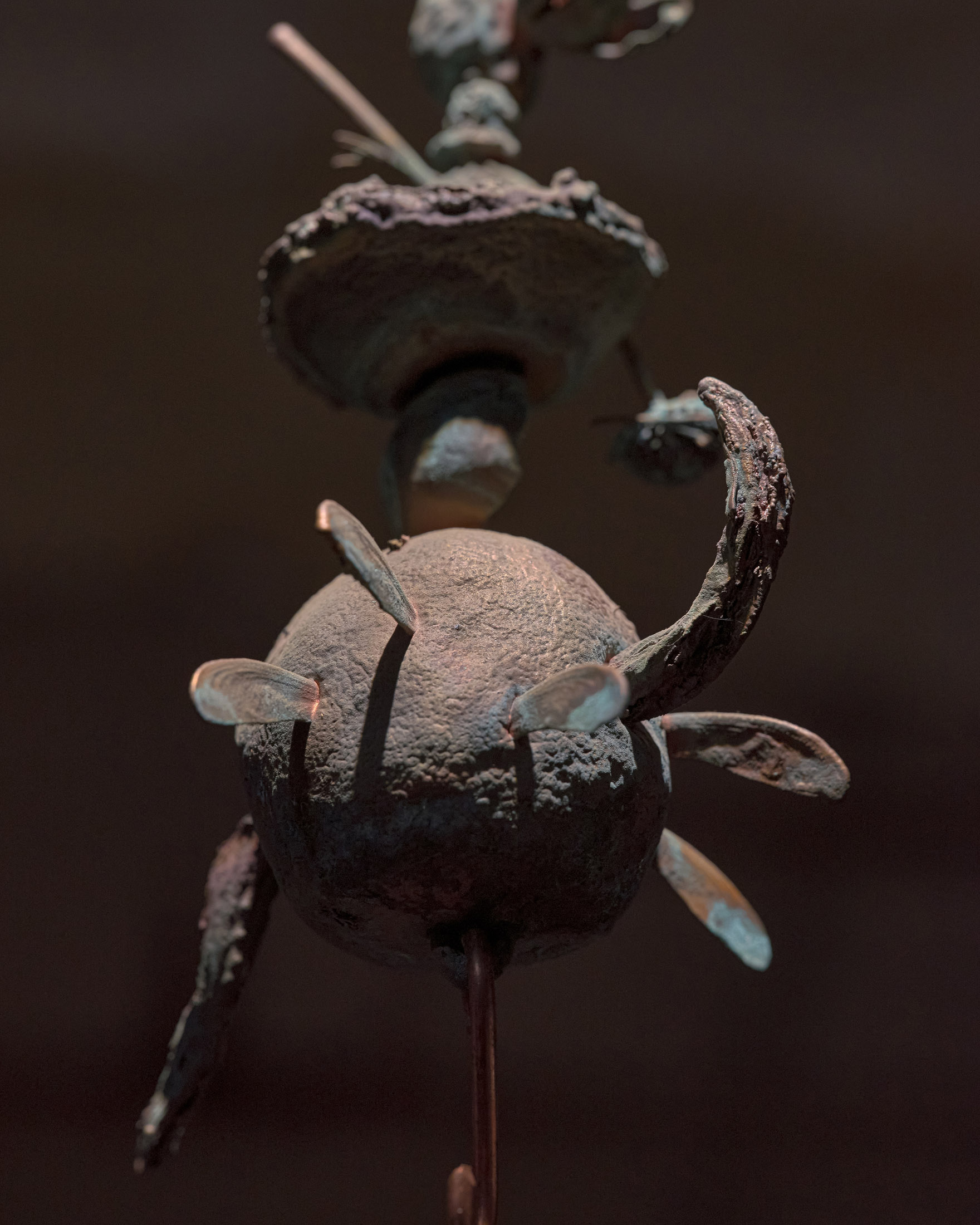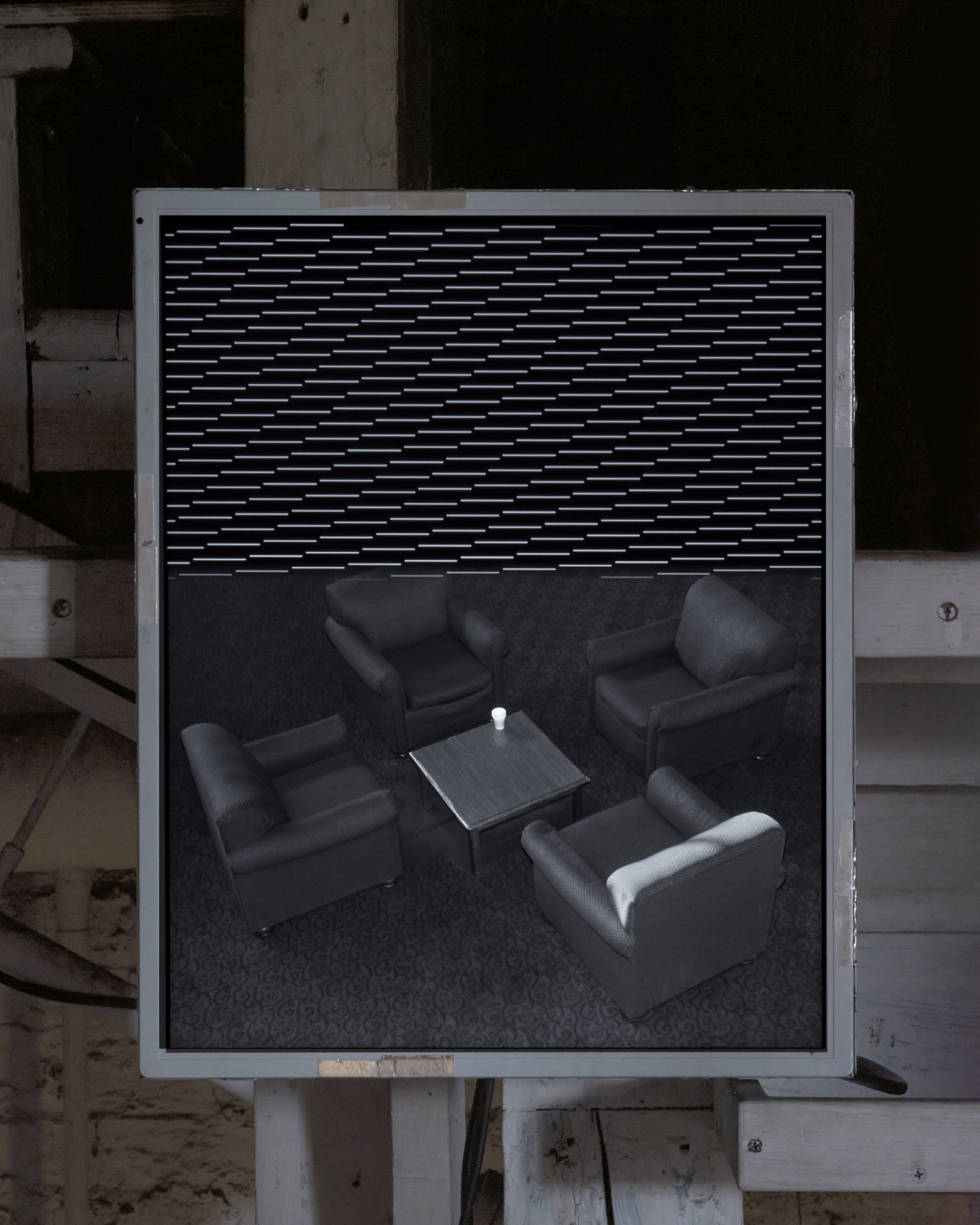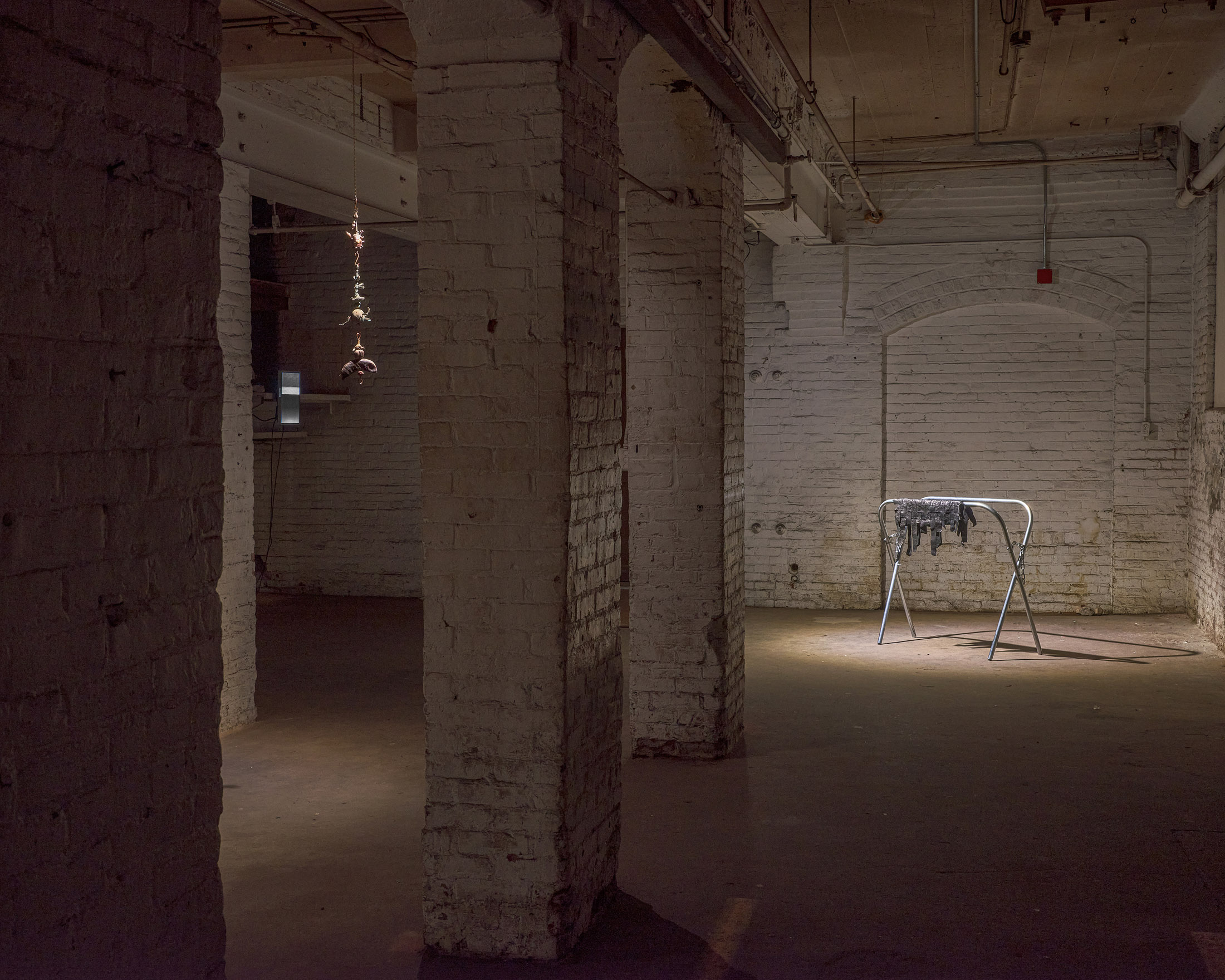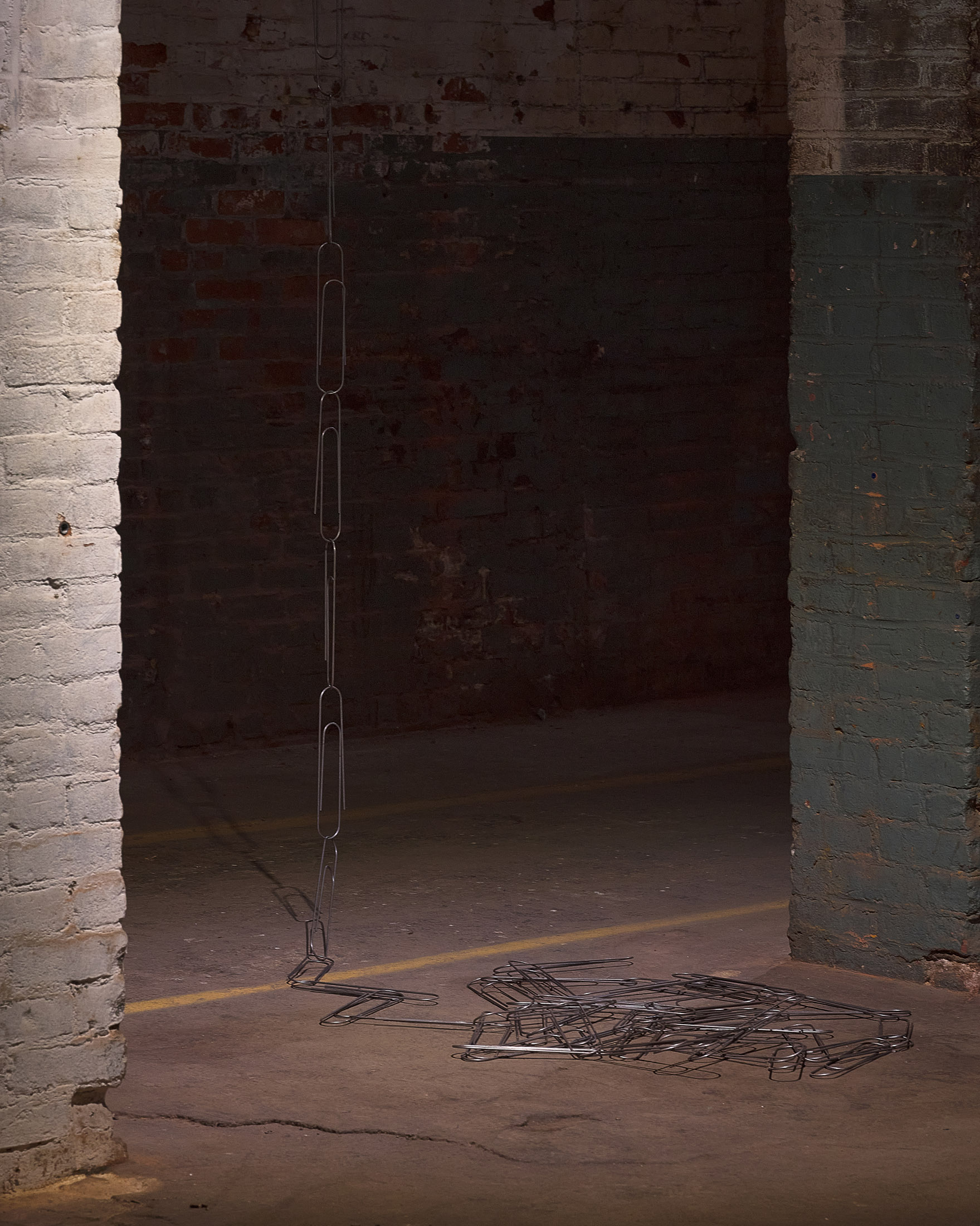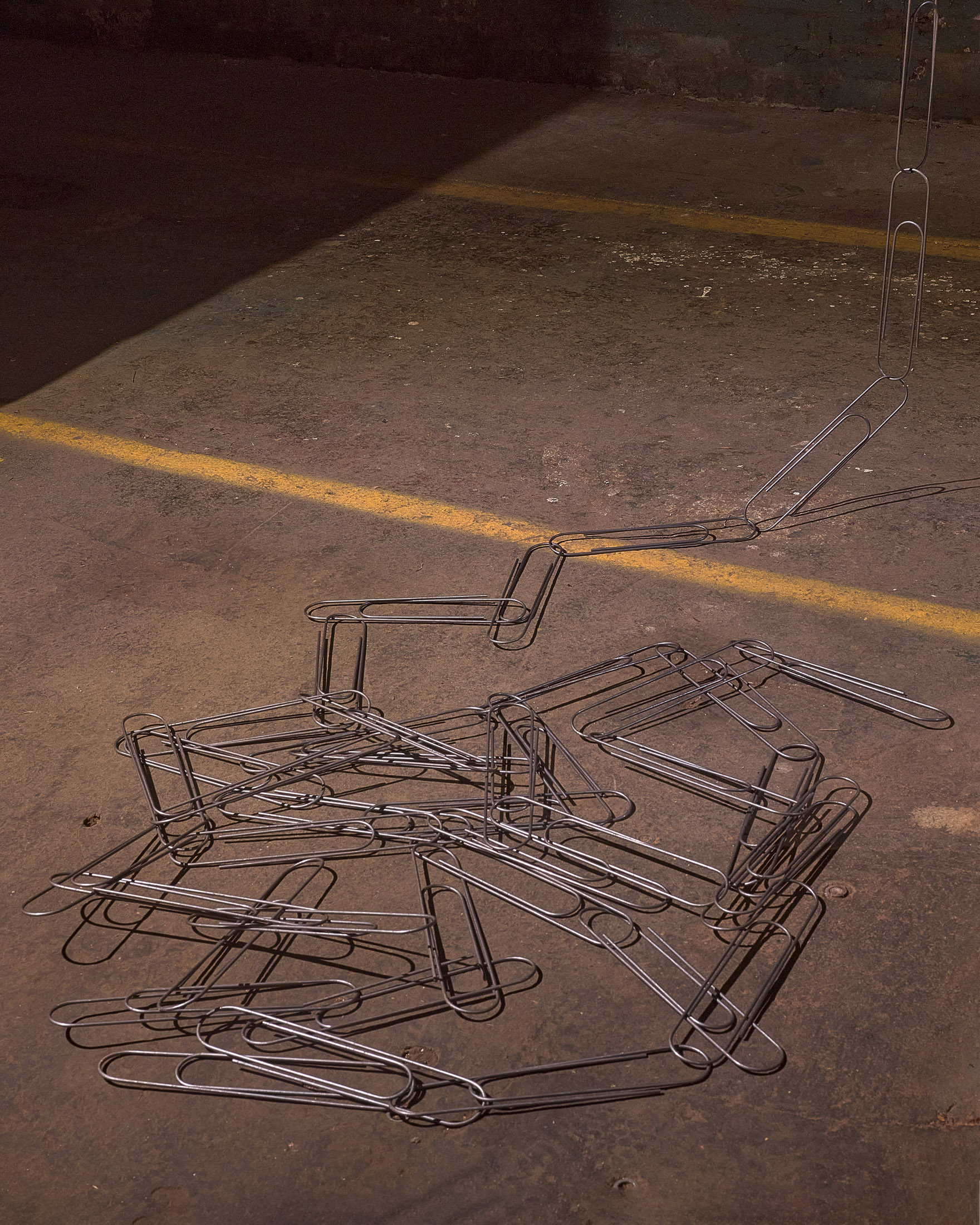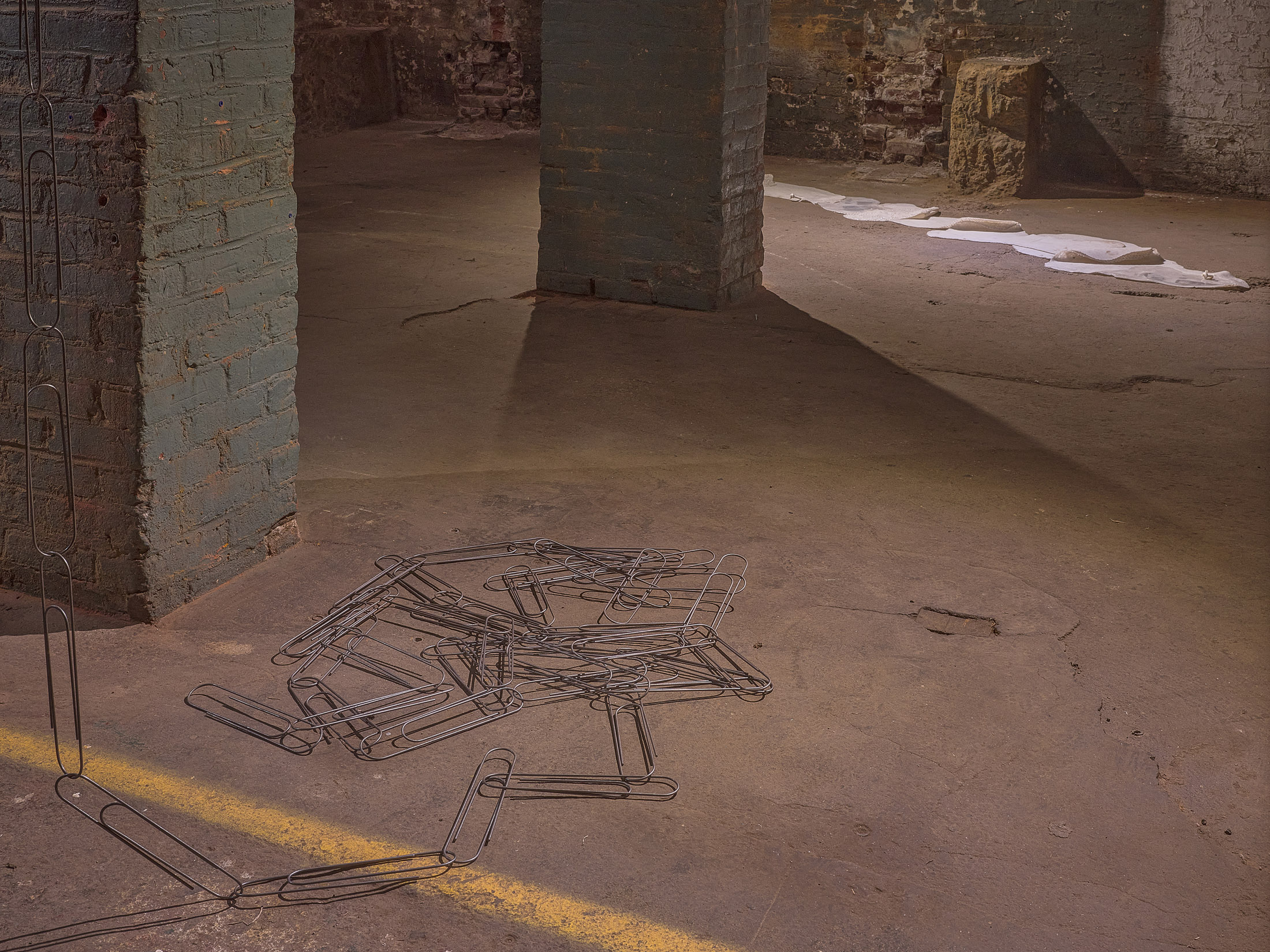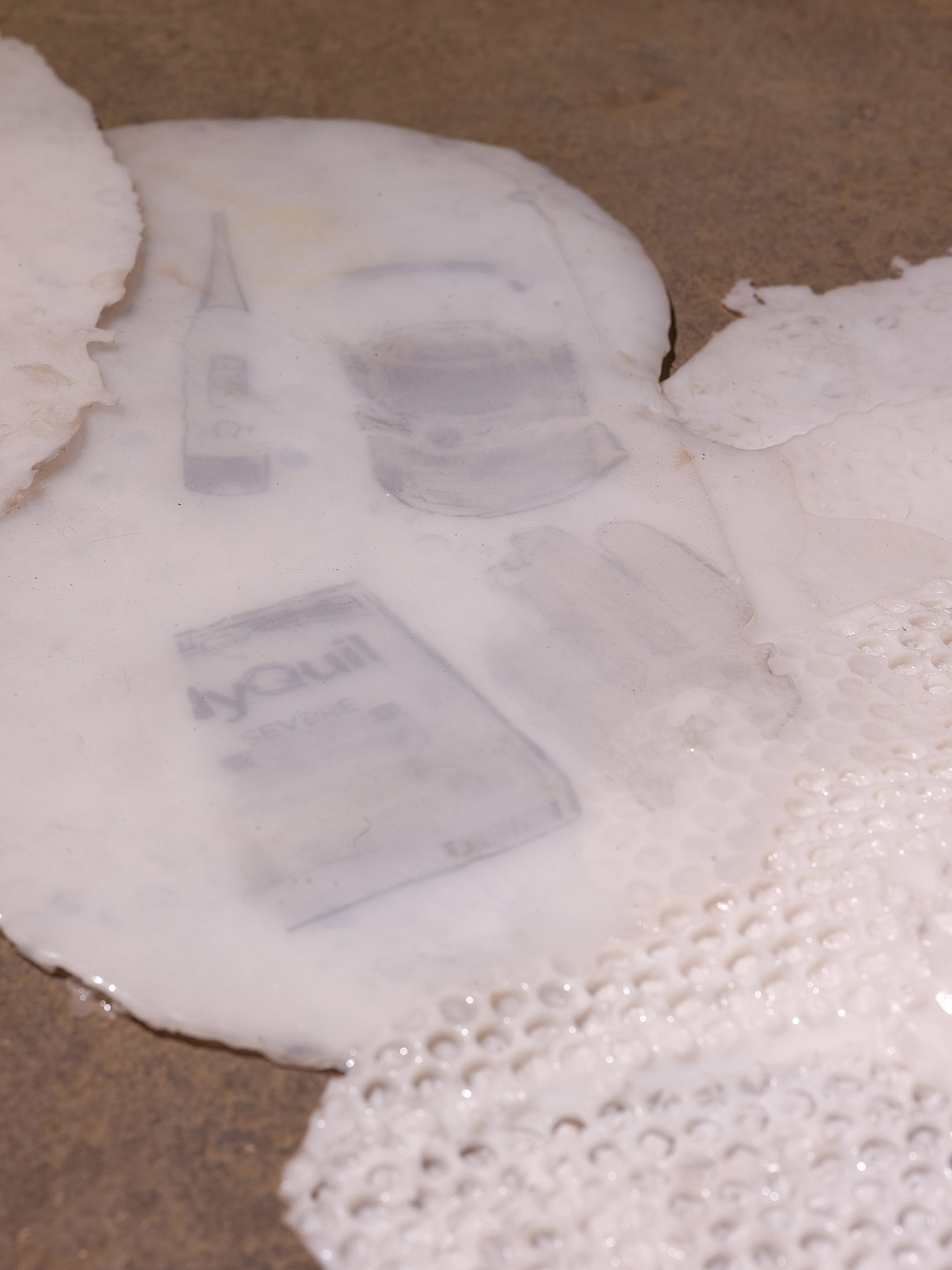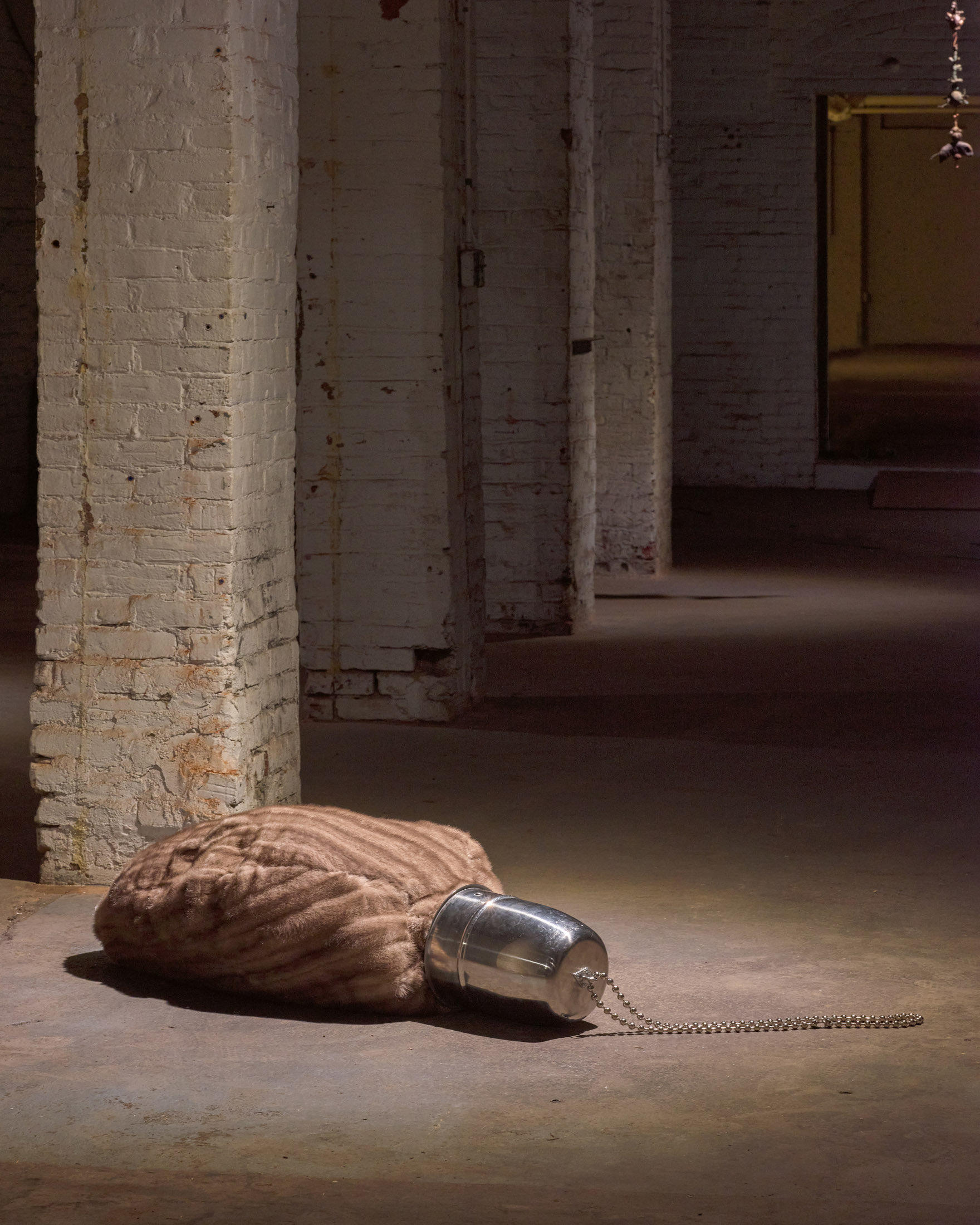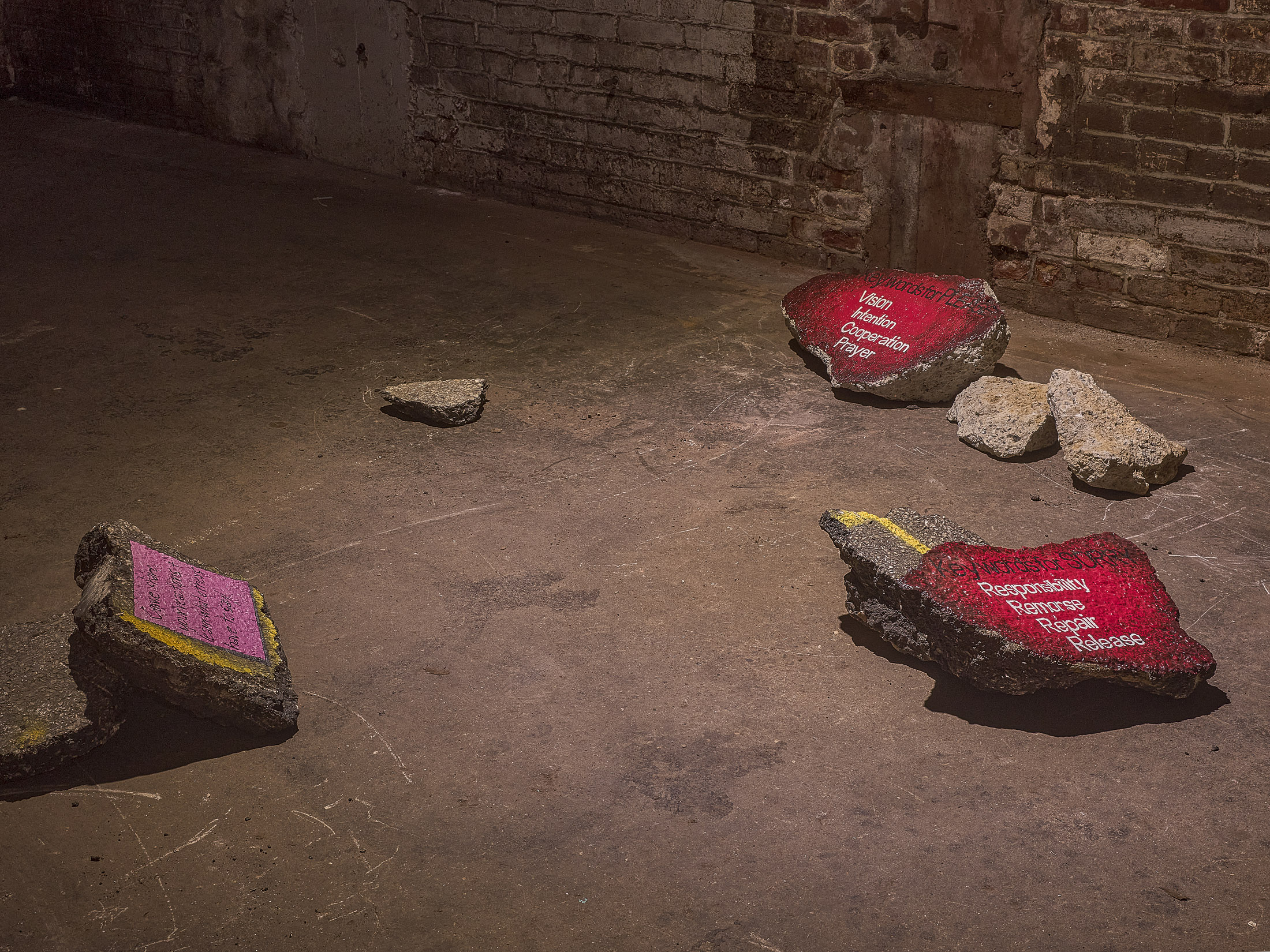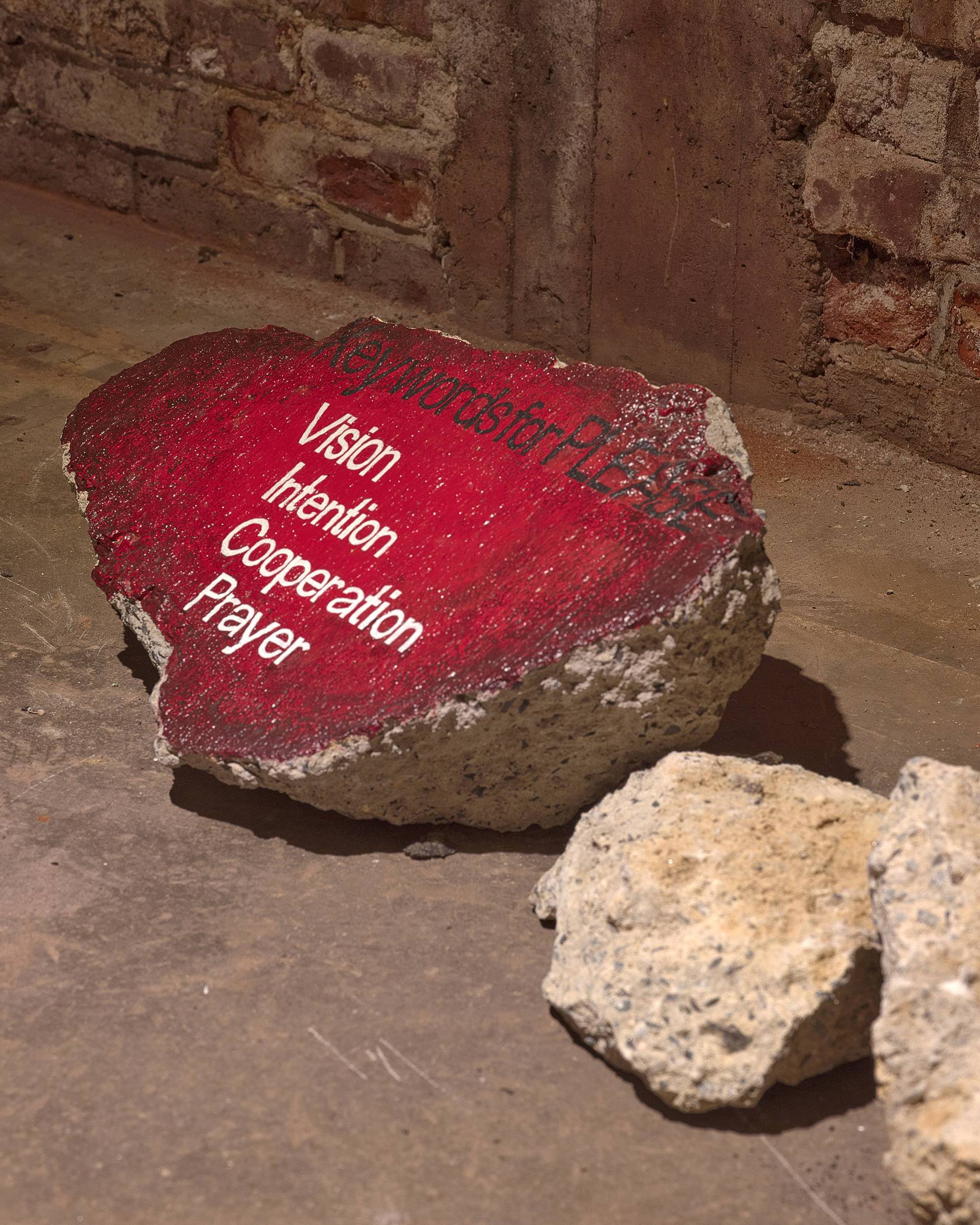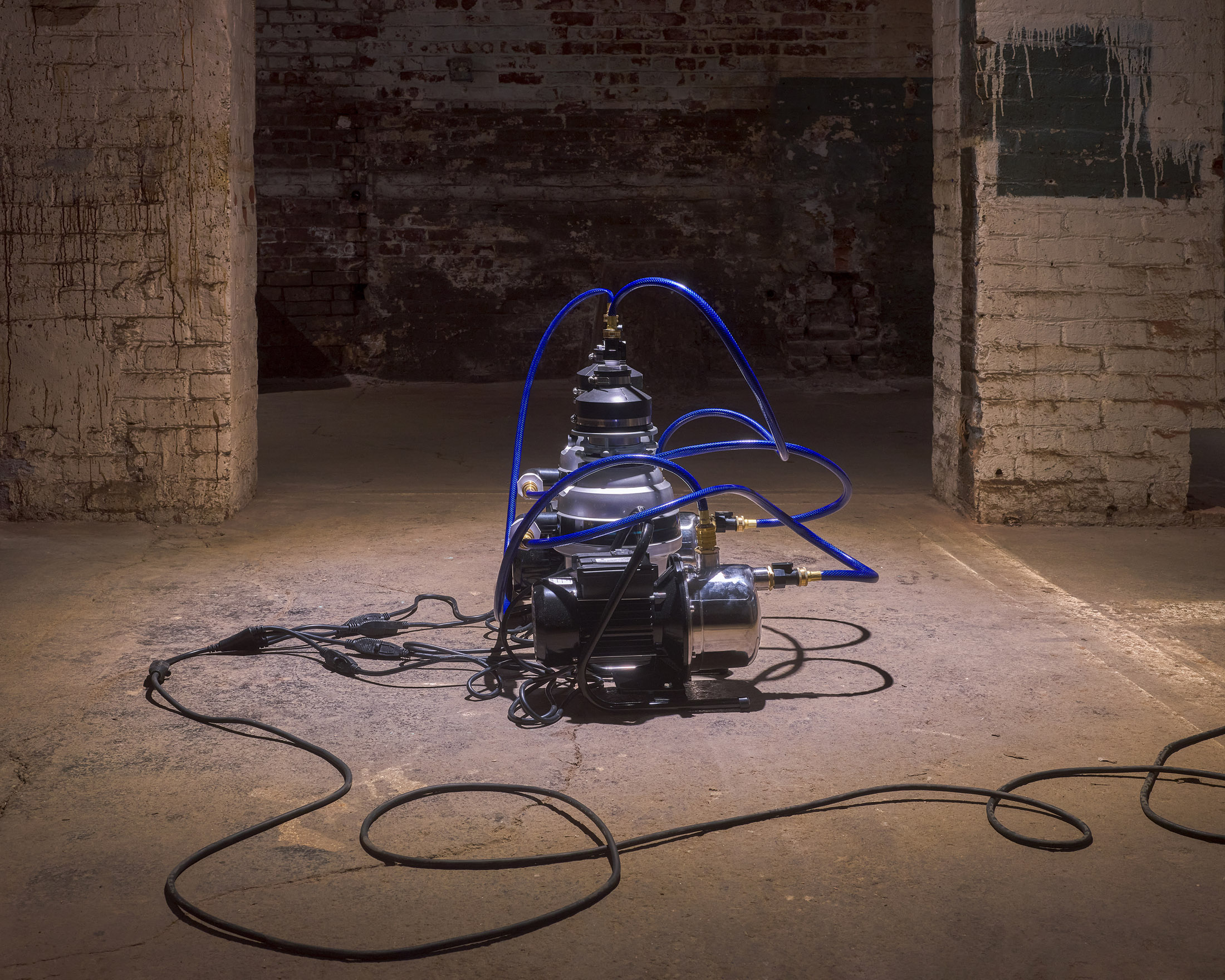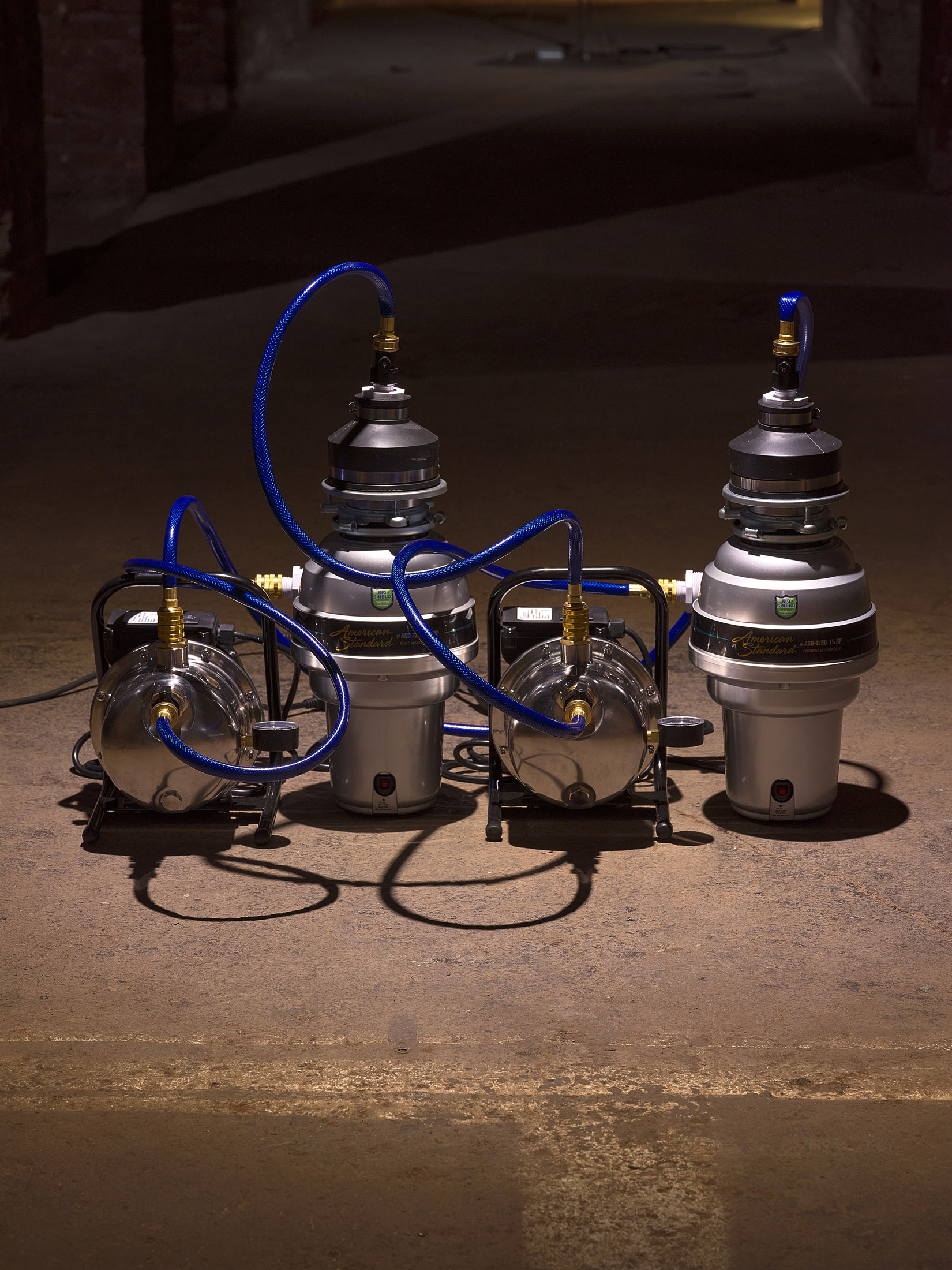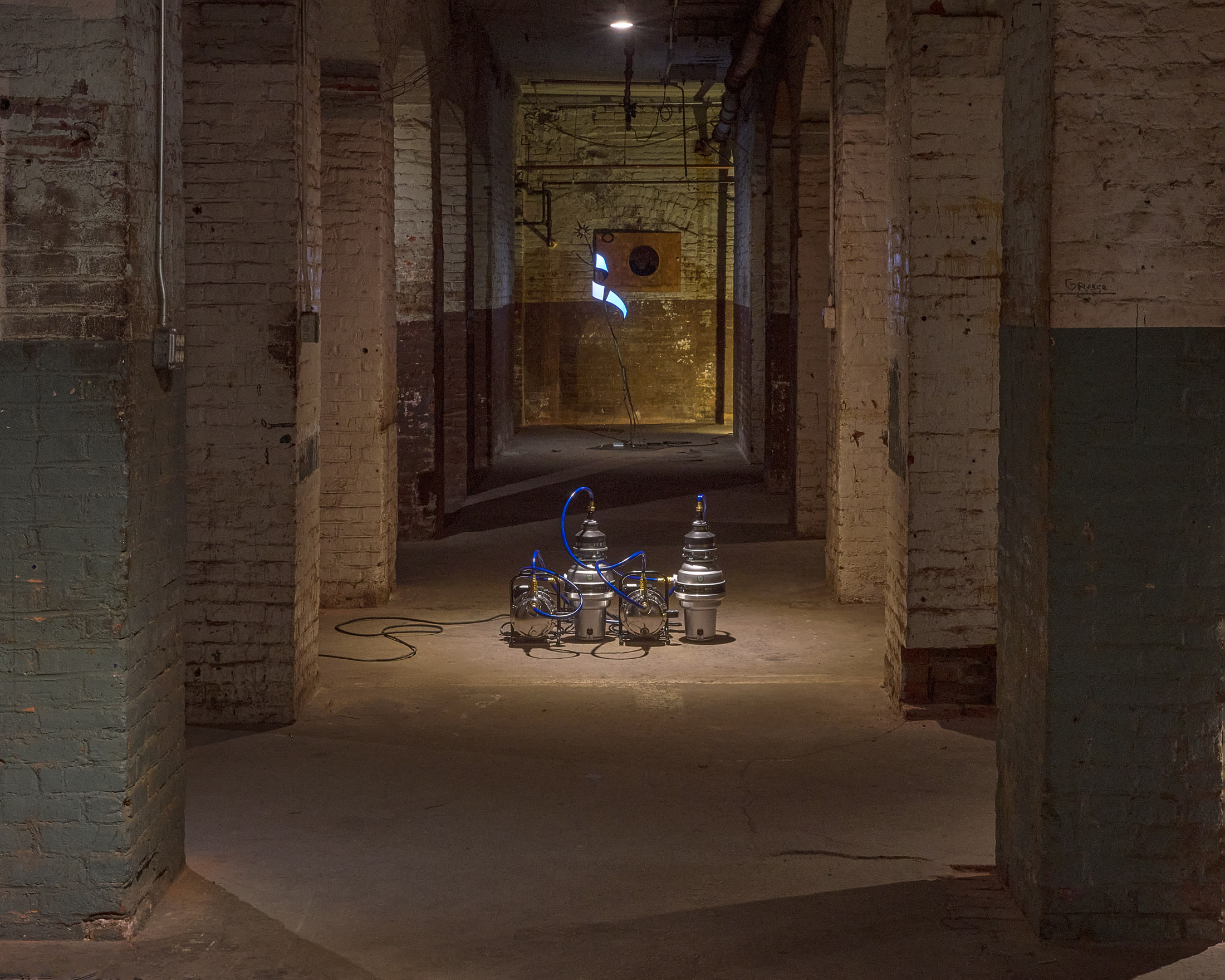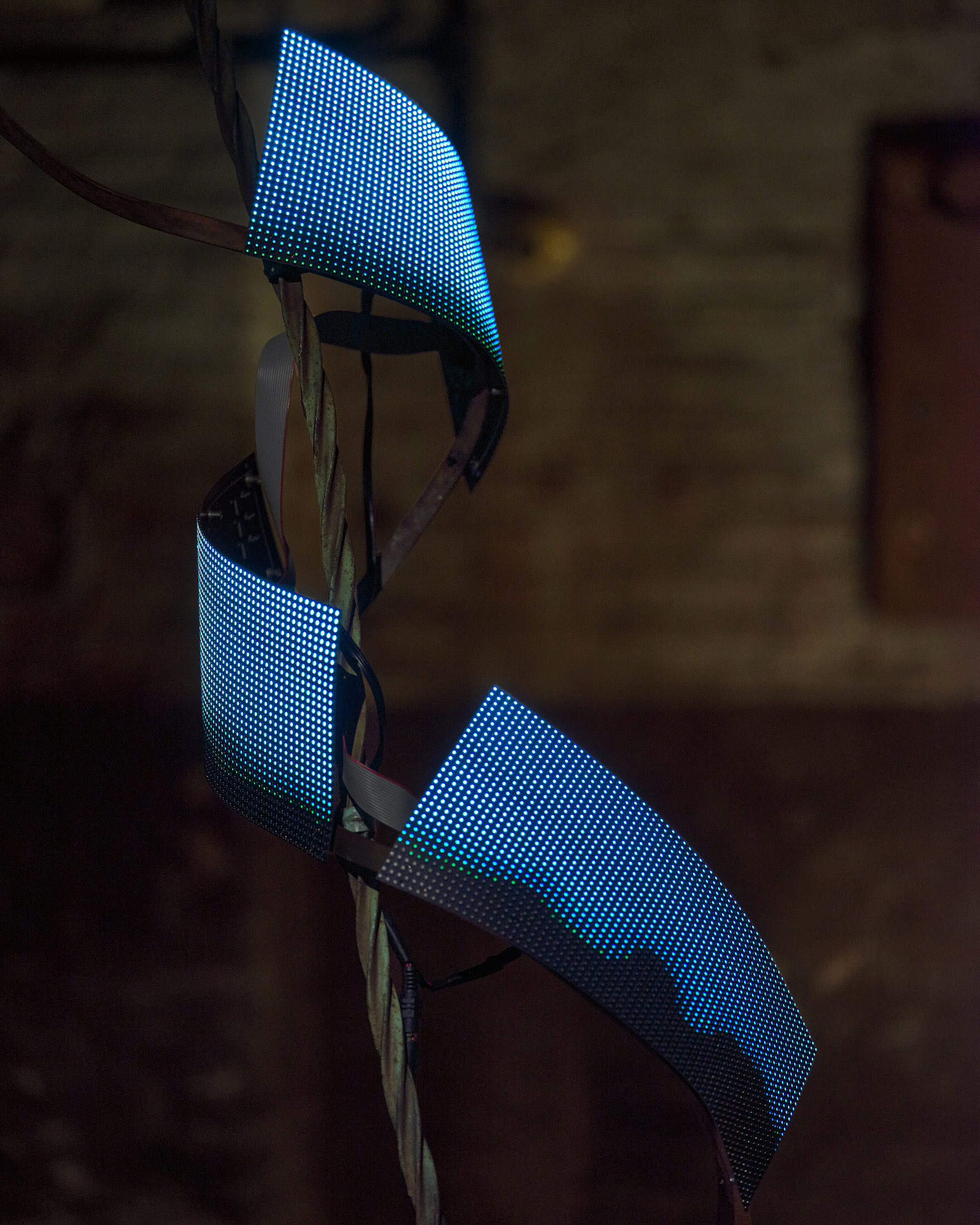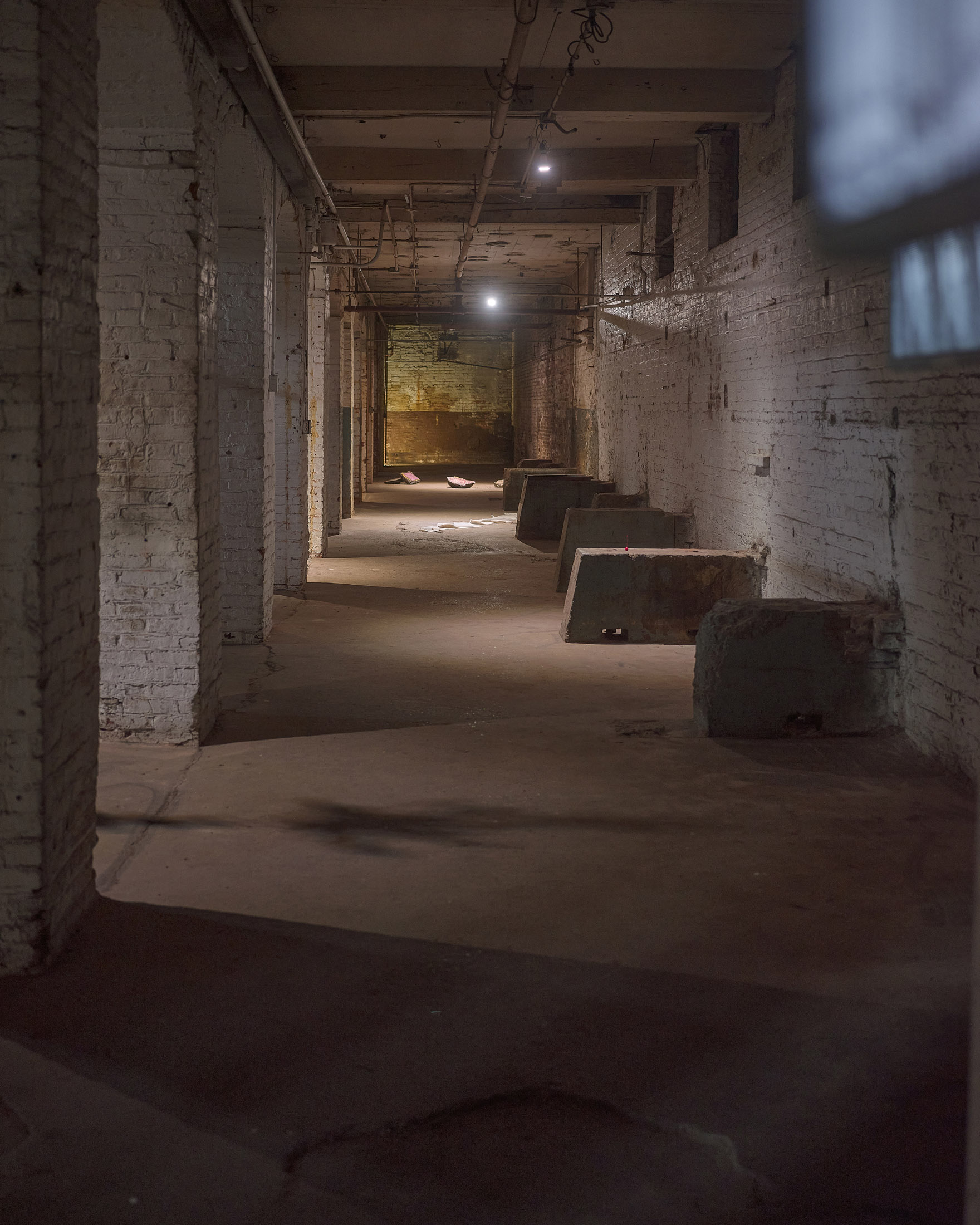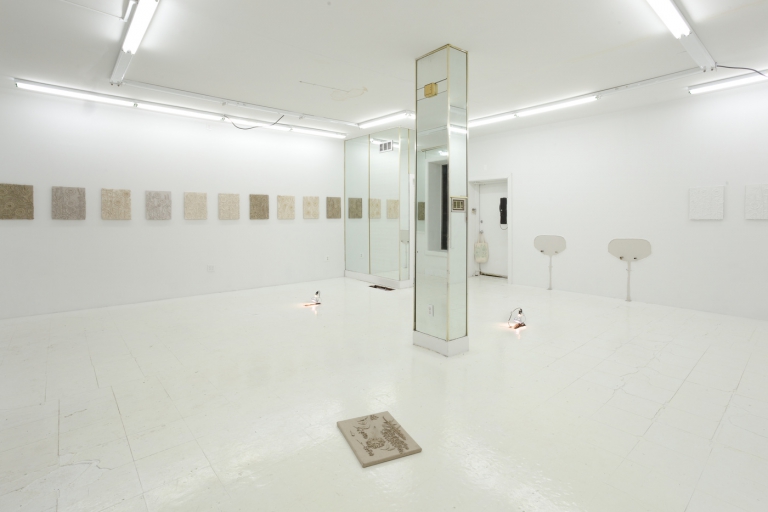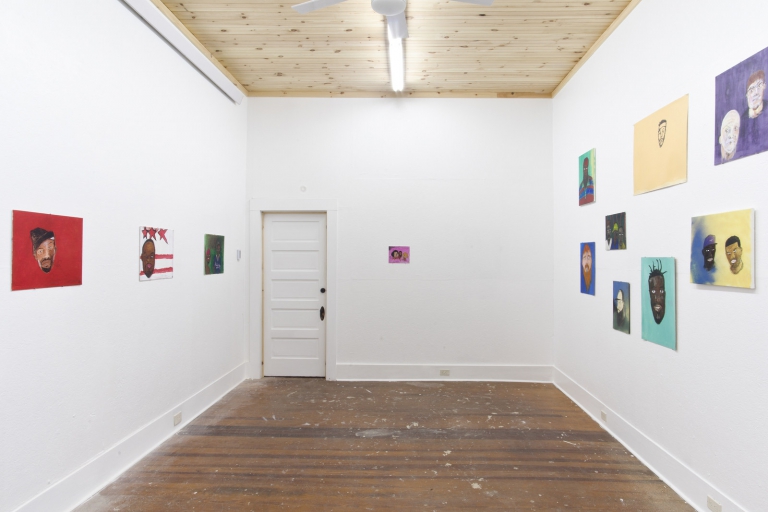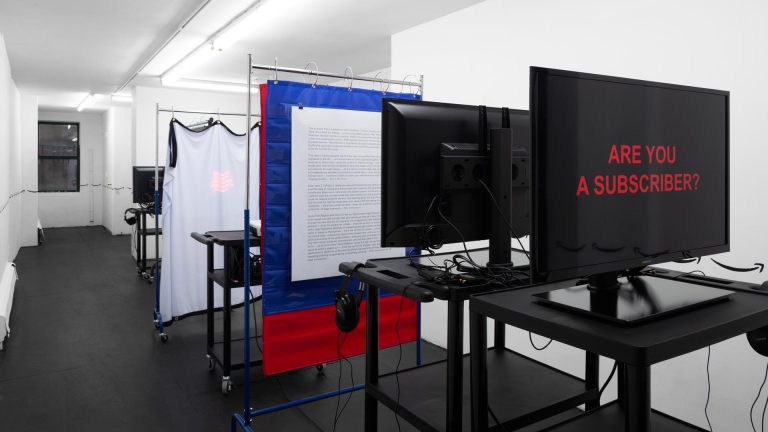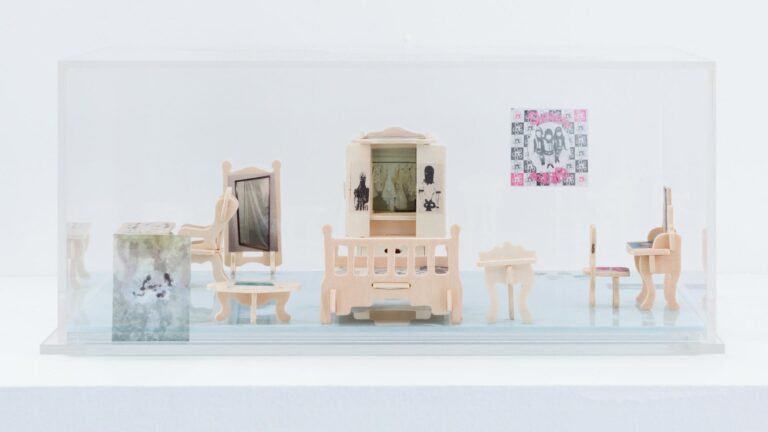Artists: Chase Barnes, Miguel Bendaña, Mira Dayal, Jess Hicks, Craig Jun Li, André Magaña, Carly Mandel, Umico Niwa, Rachel Rosheger, Quay Quinn Wolf
Exhibition title: Jacob’s Edge
Curated by: André Magaña and Carly Mandel
Venue: Lower Cavity, Holyoke, Massachusetts, US
Date: May 19 – July 8, 2023
Photography: images courtesy of the artist and Lower Cavity
Note: Exhibition’s worklist is available here
Deep in western Massachusetts’s Pioneer Valley, nestled on a dead-end street called Jacob’s Way, sits Jacob’s Edge, a modest condo complex built in 2009. Situated amidst former farmland, the development possesses no natural features that would seem to support the “edge” or “way” referenced by its placenames. Internet searches reveal no connection between the development and anyone named Jacob, for whom this small collection of homes is supposedly named.
Where does Jacob’s “Way” lead if it terminates in a dead end? What geography is delineated by Jacob’s “Edge” within a nondescript suburban landscape? Together, the two names might evoke, in the vaguest way possible, an image of a quaint and cozy New England town— someplace tucked along the bend of a small river, perhaps, and founded by some stalwart settler with the appropriately folksy-sounding name of Jacob. The names are purposely non-specific and open-ended; along with other made-up place names like “Dawson’s Creek” (or slogans like “Make America Great Again”) they summon up a hazy nostalgia for a sense of time and place that draws its narrative power precisely from the fact that it can’t be tethered to anything specific. Jacob’s way, Jacob’s Edge: the names are tautological; self-referential fictions conjured from a land developer’s sales package to cast the glamour of “simpler times” upon a collection of cheaply constructed homes in a small and unremarkable subdivision. Jacob’s Way leads nowhere but into itself; and if it could be said to sit at the edge of anything, it’s along the murky boundary where a sense of the past dissolves into exploitable nostalgia.
Exactly two miles to the west of Jacob’s Edge sits the city of Holyoke, a 19th century paper manufacturing center, and one of the first planned industrial cities in the US. Like countless former mill towns located throughout both Massachusetts and the northeast United States, Holyoke retains very little of its former manufacturing industry. Many of the city’s massive mill buildings have either been demolished or are languishing in a state of disrepair and neglect. This material legacy of deindustrialization throws a heavy shadow over the mythos of American progress, a sprawling fiction engineered to magically transmute the exploitation of stolen land and resources by a select group of wealthy industrialists into an inspiring tale of manifest destiny and rugged individualism. Yet even amidst the economic devastation left in the wake of this narrative’s collapse, the nostalgia that is both its engine and its output continues to gain an ever-greater, almost necromantic force, warping all political discourse around itself to propel further cycles of exploitation and inequity.
Located in a lower level of one of these former mill buildings and taking its name from the no-place of Jacob’s Edge, this exhibition, a curatorial project created by Andre Magaña and Carly Mandel as part of their residency at lower_cavity, contemplates the transmutational potentialities of nostalgia through a material lens. The show gathers 10 contemporary artists whose work reflects upon and subverts mythic narratives of progress and American idealism through a kind of material alchemy that amplifies, extends, or inverts our associations with everyday objects and contexts. Rather than obscuring the material transformations involved in their production, the artworks included in the exhibition embrace and foreground them, creating oscillating loops of self-referentiality that render strange the complex layers of history and mythmaking that invisibly shape American life—narratives that extend down even into our relationships with material objects. Together, the works in the exhibition create a theater of alienated meaning-making, against which the post-industrial history embodied by lower_cavity’s project space serves as a charged and brooding backdrop.
– text by Andre Magaña, Carly Mandel, and Anthony Discenza
André Magaña (b. 1992) is an artist based in New York City. He is interested in the economy of labor, the legacy of colonialism, and the cultural value of objects. He works with materials and concepts implicated in extractive capitalism to demonstrate their use value in maintaining power dynamics that favor and benefit the United States and Western Europe. He frequently approaches his subject matter through the lens of Mexican-American experience and its entanglement with the United States political apparatus. By creating through-lines between his research and lived experience, Magaña uncovers systematic and historical narratives that reveal how the economy of inequality scales within the social and material world. He has exhibited nationally and internationally. Recent solo exhibitions at Gallery Kendra Jayne Patrick, Bern, Switzerland; King’s Leap, New York, NY; Prairie, Chicago, IL; Holding Contemporary, Portland, OR. Recent group exhibitions at PUBLIC Gallery, London, UK; in lieu, Los Angeles, CA; Magenta Plains, New York, NY; SculptureCenter, Queens, NY; SORBUS, Helsinki, FI; and Wesleyan University, Middletown, CT, American Medium, New York, NY; and Alyssa Davis Gallery, New York, NY, among others. His work has been featured and reviewed in Art In America, ArtForum, New York Magazine, The Brooklyn Rail, and CULTURED Magazine.
Carly Mandel’s practice considers structures of public space, industrialization, and the US healthcare industry to understand how late-stage Capitalism enacts violence on the body and memory. In her sculptural work, Mandel works with traditional, of-the-earth materials like clay, concrete, glass, and metal, juxtaposing them against hyper-commercial, machine-rendered objects to produce material tensions that parallel those between the body and structures imposed by Capitalism. In 2015, Mandel received her BFA from the Pacific Northwest College of Art in Portland, OR. Her sculptures have been shown nationally and internationally. Mandel received a VSA Emerging Artists Grant from the Kennedy Center in 2018. She was a 2019 recipient of a Visiting Artist Fellowship from UrbanGlass. Mandel was a 2021 resident of the Bemis Center for Contemporary Art. She was featured in BOMB in 2018 and Art in America in 2021. Mandel has shown with Canada, PPOW, Klaus von Nichtssagend, Someday Gallery, 500 Gallery, Krannert Museum, and others. She is currently based in New York City.

